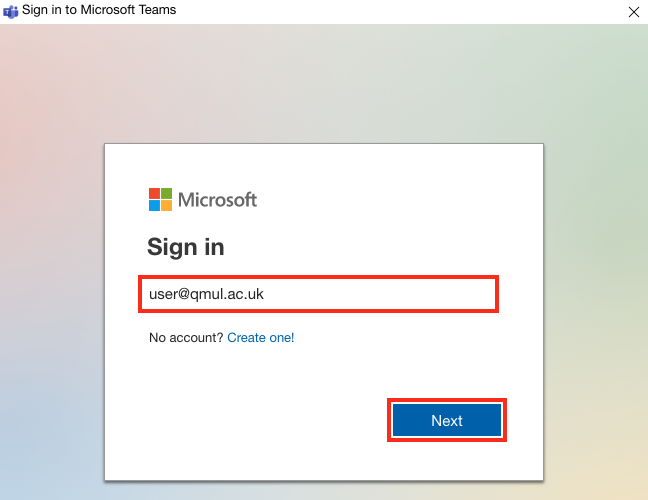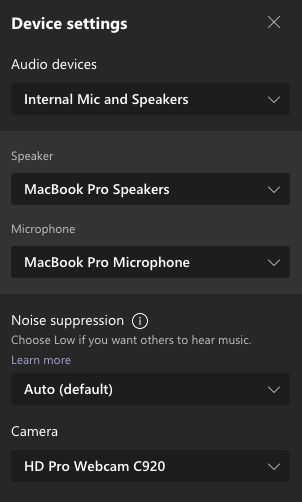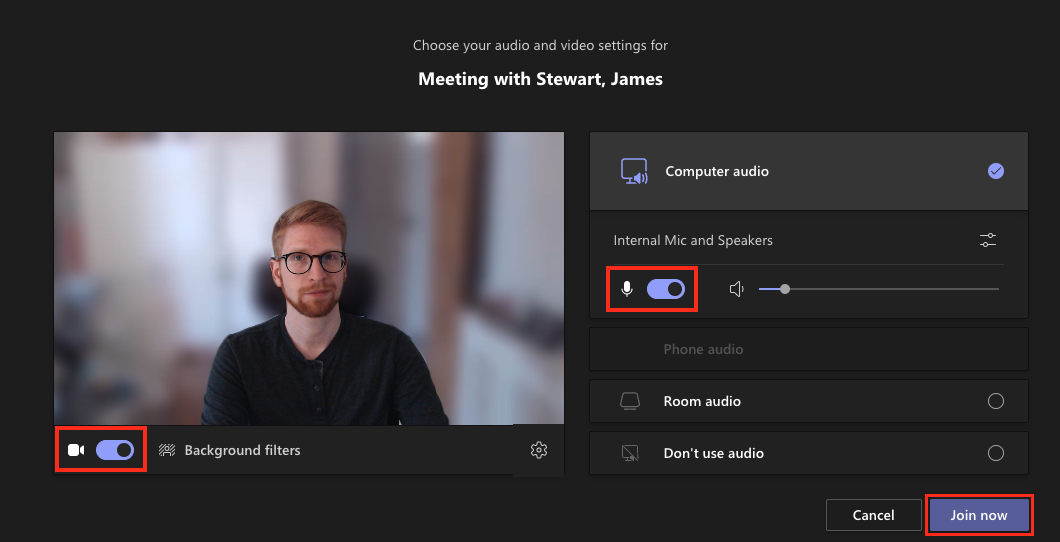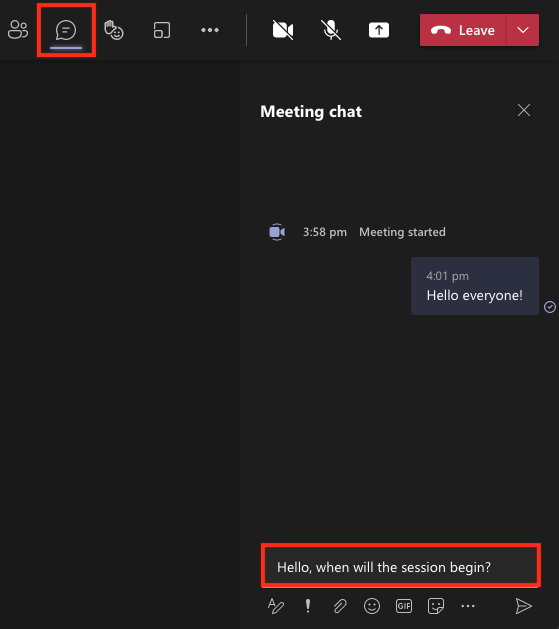Joining a Teams Webinar
As part of your programme, you may be asked to participate in live webinars using the Teams online conferencing system.
This guide explains how to access webinars and actively participate online. More information about using features during a session can be found on the Teams website. Lecturers should provide information regarding accessing your webinars and recordings.
This guide covers:
Before the session
Download Teams
- Navigate to the Teams downloads page and click Download for desktop

- Open the Teams installer file and follow the on-screen prompts to install the application
- Alternatively, the first time you attempt to join a Teams meeting on your PC, you will be prompted to download and install the desktop application
- Teams can also be accessed via the following web browsers:
- Windows: Edge RS2 or later, or Chromium-based version, Firefox 87+, Chrome 72+
- macOS: Safari 14+, Firefox 87+, Chrome 72+
- Linux: Firefox 87+, Chrome 72+
For mobile devices, the Teams app can be installed via the iOS App Store and Google Play store.
Open the Teams app and click Sign in. Follow the prompts to enter your QMUL email address and click Next.

Enter your password and click Sign in.

How to join a session
Lecturers may send you a link to join a Teams session directly. Clicking this link will automatically open Teams to join the webinar. Consider the following before joining your first session:
- You will need a computer, reliable internet connection, headphones, and a microphone (if required to speak)
- Try to use headphones, even if they do not include a microphone, as this will reduce the risk of echo or audio feedback during discussion
- Ensure that you are in a quiet space where you can listen and talk
- If presenting using a webcam, sit in a well-lit place and with a neutral background
If the session has been added to QMplus, navigate to your module page and open the joining link.

Test your audio and video
Ensure your audio and video devices are tested and working as expected. Follow the steps below to test your speaker and microphone.
By default, Teams should detect the most appropriate microphone and camera for the meeting. However, you can change this (i.e., to select a headset or external microphone) by clicking the small ‘slider’ icon under the heading Computer audio.

This will open the Device settings menu where you can choose from all of the microphones, speakers, and cameras connected to your device. You can also use this menu to adjust to the level of Noise suppression depending on the amount of background noise in your environment.

To preview your camera before joining, toggle the camera setting on to display a preview of your video. You can click Background filters to select a custom virtual background or blur your background prior to joining the meeting.

To join with audio and video enabled, ensure the toggles beside the microphone and video icons are selected. Once your audio and video preferences are set, click Join now to enter the meeting.

Participate during a session
Ensure your microphone is muted when you are not speaking to reduce background noise or echoing. Click the microphone or video icon in the toolbar to unmute/enable each option.

Click the Reactions button in the toolbar to raise your hand or express yourself (i.e., laugh or agree).

Click the Chat button in the toolbar to access the chat panel. Type your message and press ‘Return’ on your keyboard (or click the send button) to submit a message to everyone in the session.

How to access session recordings
If you are granted access to a session recording, the lecturer may choose to distribute the video using several platforms. It may be embedded in your QMplus module or sent as a link to view the recording via OneDrive or QMplus Media. Please note, recordings will only be made available at the discretion of your lecturer.
Did this answer your query? If not, you can raise a ticket on the online Helpdesk or email: its-helpdesk@qmul.ac.uk . Alternatively you can also request a particular guide or highlight an error in this guide using our guides request tracker.
Produced by the the Technology Enhanced Learning Team at Queen Mary University of London.



